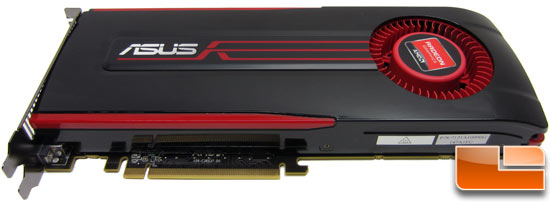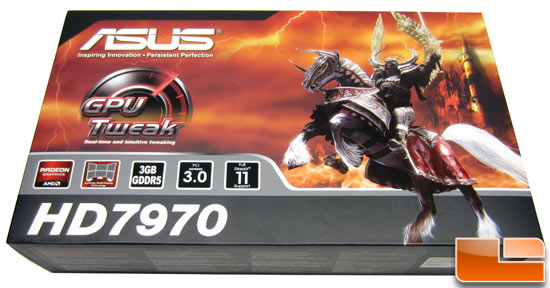ASUS Radeon HD 7970 3GB CrossFire Review
Final Thoughts and Conclusions

The AMD Radeon HD 7970 video card continues to impress us and we are glad to get our hands on two of them for Crossfire testing. The ASUS Radeon HD 7970 3GB (HD7970-3GD5-3DI2S) retails for $559.99 plus $7.87 shipping at Newegg and is currently out of stock. Most AMD Radeon HD 7970 reference design cards retail for $549 plus shipping on Newegg, so ASUS has marked up their card $10. This is likely due to brand name recognition and of course the GPU Tweak utility. Not a huge price premium to pay though in the big picture and this card is ideal for those that don’t want to flash the BIOS and mess around with third party overclocking utilities. With the ASUS Radeon HD 7970 you just install the card and the BIOS that comes on the card supports higher clock speeds than the AMD reference card. After downloading and installing ASUS GPU Tweak you can increase the voltage and overclock the heck out of this card.
As you could tell the focus of this review was on AMD Radeon HD 7970 Crossfire performance and it was impressive most of the time. In games with poor Crossfire performance scaling we saw gains of just 20% and in those that were fully optimized we saw a massive 94% increase. The card is super easy to overclock and we were able to reach 1125MHz on the core and 1575MHz on the memory with no voltage increase in CrossFire! Overall, the AMD Radeon HD 7970 did well in Crossfire setup and was a great gaming solution.
The best part of running the Radeon HD 7970 was most certainly the new AMD ZeroCore Power feature. The ZeroCore Power feature shuts down the GPU during periods of long idle (when the screen goes to
sleep). When the GPU goes to the power state the fan stops spinning and
the GPU core itself consumes 0W while the rest of the PC is still
running. When running CrossFire the secondary cards all run in ZeroCore Power state when not in use. AMD told LR that they developed this technology from feedback from CrossFire users who didn’t need all those cards running when at idle. The end result is a system that is running CrossFire with lower noise and less heat and improved power efficiency.
That said, we did run into some minor driver issues along the way that AMD is still working on. For example with the original launch drivers we had to run two CrossFire interconnects to enable two card Crossfire, which is a bug. AMD sent over a new driver this week that fixed the Crossfire interconnect issue , but it broke AMD Zero Power when running in Crossfire. When the system would idle both cards were still running and then in a long idle state the primary card fan would shut down and the secondary card fan would still run. Not exactly right and we held this review four days for a new driver to come out, but it keeps getting held. We are told that it will be fixed in the 8.921.2 RC11 driver release that will be happening on Friday. We are sure that AMD will get this sorted, but for now we have yet to see a driver with everything perfected.
To sum things up, the ASUS Radeon HD 7970 is a great card, but we can’t wait to see what ASUS is going to do on their custom cards. We’ll be dreaming of an ASUS Radeon HD 7970 with a custom PCB, DirectCU III GPU cooler and a factory overclock for under $600!
Since we gave the AMD reference design the Editor’s Choice Award it seems only fair to give this card the same.

Legit Bottom Line: The ASUS Radeon 7970 3GB GDDR5 video card is based off the AMD reference design, but comes with GPU Tweak and a BIOS that is overclocking friendly!


Comments are closed.